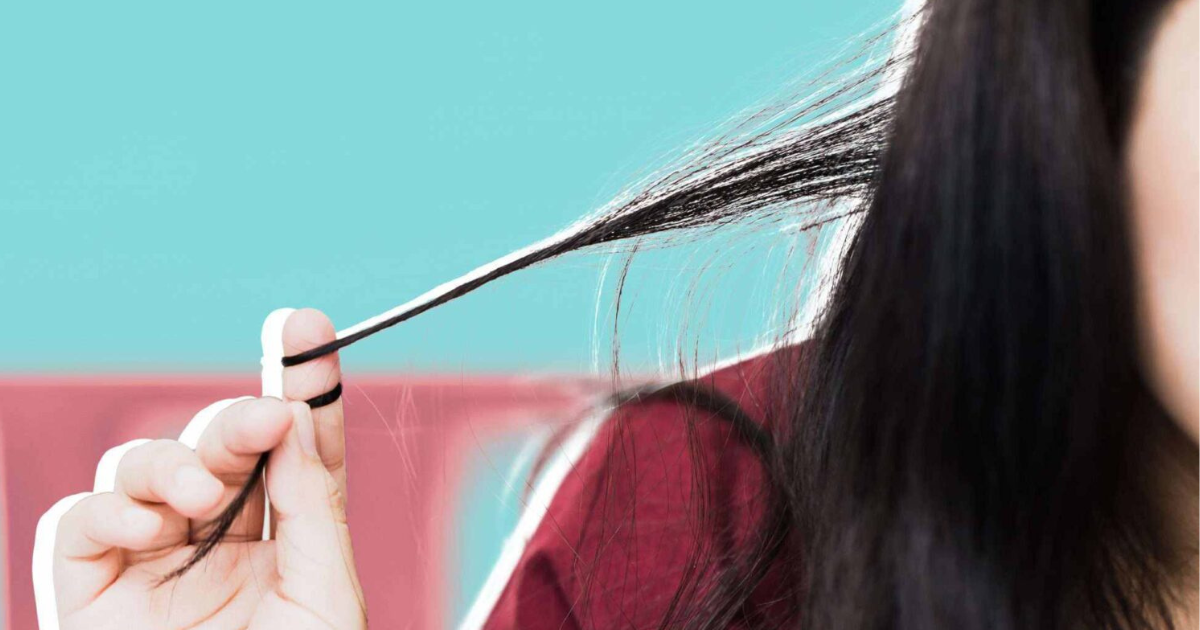Do you often find your hands wandering through your hair without even realizing it? Has this habit taken a toll on your hair’s health? If you’re nodding in agreement, you might be dealing with the Hand in Hair Syndrome.
This repetitive behavior can escalate into Trichotillomania, a hair-pulling disorder, causing dryness, breakage, hair fall, and overall poor hair condition. The good news is, you can overcome this habit with some practical steps.

Hand In Hair Syndrome: 6 Best Ways Stop Touching Your Hair
1. Pull Back and Secure
One of the simplest ways to reduce hair touching is to pull your hair away from your face. Opt for a hair clip, scrunchie, or hairband to tie your hair in a ponytail or half-up style.
This not only keeps your hair off your face but also deters you from absentmindedly touching it. If you’re fidgeting with baby hair, use hair oil or cream and pin them neatly with a bobby pin.
2. Occupy Your Hands
Identifying triggers for your hair-touching urges is vital. Do you tend to touch your hair when you’re stressed, bored, or concentrating? Combat these moments by keeping your hands busy with a fidget toy.
While this might not work for everyone, trying inexpensive options like a Roller Chain fidget toy could help redirect your habit.
3. Change Your Environment
Break the cycle of hair-touching by altering your surroundings. If you usually touch your hair while sitting at your desk, step away and grab a glass of water or engage in a conversation with someone in another room.
Recognizing these triggers and modifying your environment can help you snap out of this habit.
4. Keep Hands Moisturized
Combat the urge to touch your hair by keeping your hands moisturized throughout the day. Applying hand lotion will make your hands slippery, which can deter you from touching your hair. However, ensure not to overdo it, as excessive lotion on your hair can make it appear greasy.
5. Seek External Support
Inform your close friends and family about your endeavor to stop hair-touching. Request their assistance in recognizing and pointing out moments when you unconsciously touch your hair. Often, external reminders can help you become more mindful of your actions.
6. Embrace Hair Accessories
Consider incorporating hair accessories into your daily routine. The “Waver Bun,” a hair tool coated with gentle satin material, can be a game-changer.
By wearing it during trigger moments—such as sitting at your desk—you not only protect your hair but also subconsciously remind yourself to avoid touching it.
Remember, breaking free from the Hands in Hair Syndrome is a journey that requires patience and perseverance. By implementing these six strategies, you can gradually regain control over this habit and improve the health and appearance of your hair.
In conclusion, excessive hair-touching can lead to various hair-related issues and even escalate to a hair-pulling disorder.
To combat this habit, pulling your hair away from your face, occupying your hands with fidget toys, altering your environment, keeping your hands moisturized, seeking support from loved ones, and using hair accessories like the Waver Bun can make a significant difference.
With consistent effort and these practical strategies, you can overcome the urge to touch your hair and enjoy healthier, more vibrant locks.








Leave a Reply
You must be logged in to post a comment.